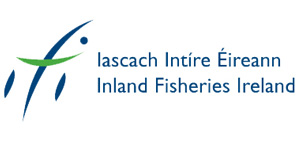Fish Stock Survey of Lough Bane, September 2022
Lough Bane is situated on the Meath-Westmeath border within the Boyne catchment, approximately 10km south of Oldcastle, Co. Meath (Plate 1.1 and Figure 1.1). It has a surface area of 75ha, a mean depth of >4m and a maximum depth of 16m. The lake is categorised as typology class 12 (as designated by the EPA for the purposes of the Water Framework Directive), i.e., deep (>4m), greater than 50ha and high alkalinity (>100mg/l CaCO3).
Lough Bane is a public water supply for the north Meath area. Lough Bane is one of three lakes, along with Lough Glass and Lough Glass North, to make up the Lough Bane and Lough Glass Special Area of Conservation (NPWS, 2013). The lakes are situated in a shallow valley that occurs at the headwaters of the River Deel, with the main outflow at the south-east end of Lough Bane. Lough Bane is a good example of a hard water marl lake, an important habitat listed on Annex I of the E.U. Habitats Directive (NPWS, 2013). The lake contains well developed stonewort communities, and at least four species of charophyte. Mixed woodland composed of beech (Fagus sylvatica), oak (Quercus spp.), holly (Ilex aquifolium), Scots pine (Pinus sylvestris) and European larch (Larix decidua) occur along parts of the southern and northern shores of the lake. Lough Bane was once home to a population of white-clawed crayfish (Austropotamobius pallipes), a species listed on Annex II of the E.U. Habitats Directive (NPWS, 2007). However, in 1986 this species was declared extinct from the lake due to an infestation of the fungal plague, Aphanomyces astaci (NPWS, 2013). Bird species found at the lake include the little grebe, cormorant, lapwing, curlew and snipe (NPWS, 2013).
Lough Bane historically held a stock of wild brown trout (Salmo trutta). The lake is stocked annually by the Lough Bane Angling Association with both brown trout and rainbow trout (O’ Reilly, 2007). The lake has been surveyed on four occasions since 2007 (2007, 2010, 2013 and 2016) (Kelly and Connor, 2007 and Kelly et al., 2011, 2014 and 2017). In all surveys conducted to date, perch were found to be the dominant species present in the lake.
This report summarises the results of the 2022 fish stock survey carried out using Inland Fisheries Ireland’s fish in lakes monitoring protocol. The protocol is WFD compliant and provides insight into fish stock status in the lake.
Topics: Lake Surveys 2022 , Lough Bane |
